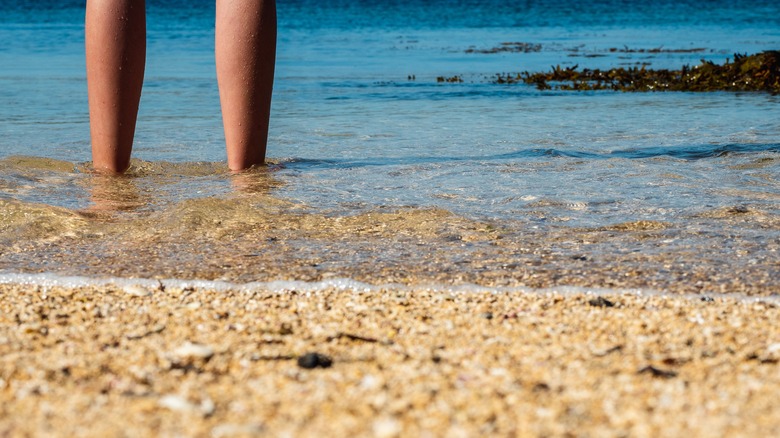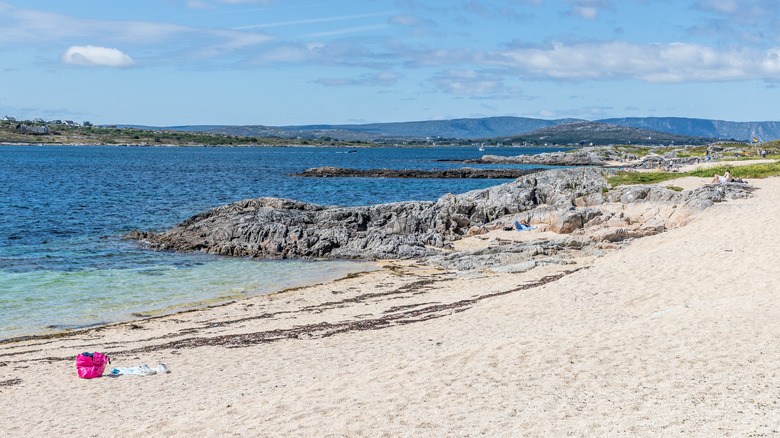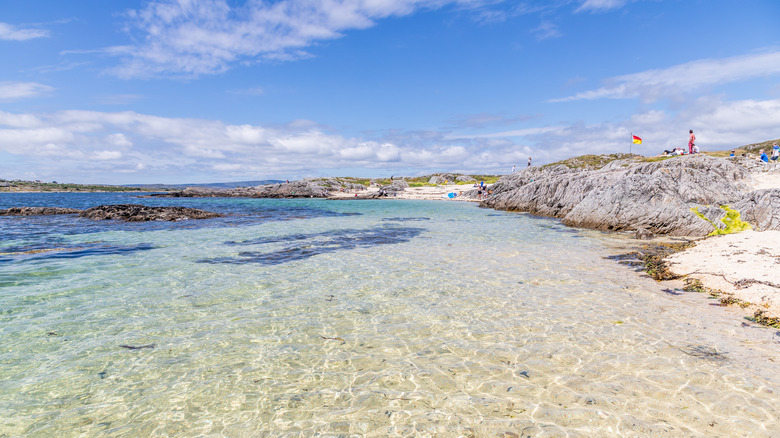Irish weather has a reputation for being unpredictable, which is perhaps why the country doesn’t immediately spring to mind when many people think about a beach vacation. That all depends on your expectations, however. If you enjoy a brisk ramble along a beach without a parasol or sun lounger, then Ireland’s dramatic coastline has plenty to offer. If a bit of wind and rain is likely to ruin your trip to the seaside, then perhaps it isn’t for you!
Despite the changeable conditions, the Emerald Isle’s beaches still rank alongside the best that Europe has to offer, challenging the usual suspects like Greece, Italy, and Spain. And one hidden beach, Trá an Dóilín in County Galway, has one unique feature: Sand that isn’t regular sand at all. Trá an Dóilín, or Coral Beach in English, is one of its well-kept secrets. Tucked away on the Carraroe Peninsula in the Conamera region, it looks like the gleaming sands of a Mediterranean island at first glance. The beach’s true nature becomes apparent only on closer inspection, and the clue is in the name.
What makes Coral Beach so special?

Flanked by rocks and offering fine views across the sea to the island of Gorumna, Trá an Dóilín is a gleaming stretch of beach with shallow, sparkling clear water. Kids will adore poking around in rock pools when the tide is out. Awarded the Blue Flag for cleanliness, it’s a beautiful spot that feels off the beaten track, and it is popular for swimming, snorkeling, and paddle boarding.
The most unique feature of the small bay is the sand, which is like a fine shingle in texture. Unlike most other Irish beaches formed from regular sand or stones, what you’re walking on here is coral-like biogenic gravel, which gives the beach its English name. It looks like tiny fragments of coral, but it is actually crushed-up seaweed called “maёrl” that has been pounded into fine pieces by the waves and bleached out by the sun.
Despite its isolated feel, Coral Beach is pretty easy to get to. It’s just over an hour’s drive from the city of Galway and five minutes from Carraroe village. Amenities are basic but enough to make a visit comfortable, with a small car park nearby, public restroom facilities, first aid stations, and a lifeguard on duty in the summer months. If you plan to stay for a while, bring your own food and drink because there are no cafés, shops, or restaurants in the immediate vicinity.
Places to eat and stay near Coral Beach

You might come to the Carraroe Peninsula for the unusual beach, but it’s worth staying for a taste of Irish culture. The Conamera region has a rich heritage and is located in the Galway Gaeltacht, a part of Ireland where many locals are active Irish speakers. As recently as 2016, up to 62% of people in the area spoke the language daily; it is common to see signage in Irish and English.
Carraroe village has several hotels and guesthouses, making it a good base for enjoying Coral Beach and the surrounding area. Most are relatively modest, but you are almost guaranteed a warm welcome. Carraroe House is rated 5 stars on Tripadvisor, with guests praising the great breakfasts and hospitality of the owners. O’Domhnaill’s Guesthouse is also commended for its location and comfortable rooms.
A trip to Ireland wouldn’t be complete without a visit to the pub, and fortunately, Carraroe has a few to choose from. Tigh ‘n Tailliura is a good spot for a Guinness or two and some pub grub, while An Chistin is a cozy old-fashioned boozer with a beer garden and live music some nights. Ireland is regarded as a friendly European destination, so both are great places to mingle with the locals and try out a little Irish language!

